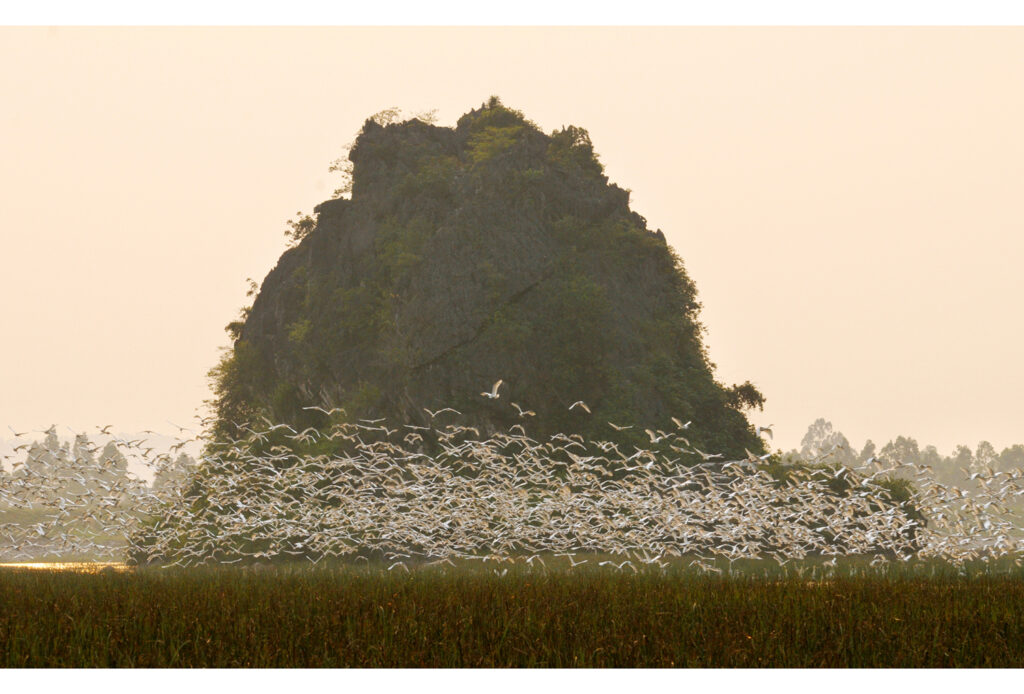Natural Heritage
WORLD NATURAL HERITAGE
The Convention on the Protection of the World Cultural and Natural Heritage, referred to as the World Heritage Convention, was accepted by the United Nations General Assembly on November 16, 1972. This is the first international Convention to associate the concept of nature protection with the protection of cultural heritage, bringing a new approach with the necessary legal basis, ensuring a balanced and harmonious relationship between the two countries. humans and nature, between past, present and future. The Convention helps member countries link heritage protection with local planning and development strategies; Sustainable protection not only of the World Heritage Site but also of each country’s cultural heritage. World Heritage Sites (World Heritage Sites) are classified into three types: cultural heritage, natural heritage and mixed heritage.
As of July 2019, there are 1,121 listed World Heritage sites (869 cultural heritage sites, 213 natural heritage sites and 39 mixed heritage sites), existing in 167 countries. Vietnam has been recognized with 22 World Heritage Sites, including 02 Natural Heritage and 01 mixed heritage.

About the fairy tale land (Photo taken at Van Long, Trang An Scenic Landscape Complex) – Author Bui Dang Thanh
Criteria for recognition as world natural heritage
To be listed as a UNESCO World Heritage Site, a property must meet the cultural or natural criteria set forth by the World Heritage Convention.
A cultural relic must be authentic, have a profound influence or have unique evidence for the development of architectural art, or the relic must be associated with ideas or beliefs of popular significance, or is an outstanding example of a traditional lifestyle that represents a certain culture.
A natural heritage site may represent a period or process of earth’s evolution, or of ecological changes, or include natural habitats of endangered species. Natural heritage can be an unusually beautiful scene, a breathtaking landscape, or a sanctuary for large numbers of wildlife.
Some criteria for specific natural heritage are as follows:
(VII) – Contains outstanding natural phenomena, sites or areas of unique natural beauty and aesthetic importance.
(VIII) – Are outstanding examples representing major periods in the history of the Earth, including the history of life, important geological processes continuing in the development of terranes. features, or important geological or physical geographical features.
(IX) – Are typical examples of ongoing ecological and biological processes in the evolution and development of landforms, freshwater, marine and coastal areas and animal communities, plants.
(X) – Are the most important and most typical natural habitats, which have the value of preserving biodiversity, including habitats containing endangered species of animals or plants, of outstanding universal value from a scientific or conservation point of view.

Red-crowned crane – Photo provided by Lo Go Xa Mat National Park
In addition to the above natural standards, those natural heritages must also meet regulations on integrity and management and protection systems. As follows:
- Regarding integrity: a natural World Heritage site that ensures integrity is: (i) contains all relevant ecological, geological and/or scenic elements necessary to maintain the values it holds. was listed; (ii) large enough to include key features of Outstanding Universal Value and remain viable over time, and (iii) be in a good state of conservation.
- Regarding protection and management activities: The third requirement specified in the Operational Guidelines is that each World Heritage Site must have a full protection and management system. The expectation of effective protection and management is required to ensure the protection of the heritage’s OUV. According to UNESCO guidelines, a World Heritage site is not required to be a recognized protected area. However, IUCN – the coordinating agency in assessing the criteria of a natural heritage site, believes that the criteria set by UNESCO often meet the criteria of a protected area and, moreover, there is also a need for require higher, more active and more effective management and protection. Therefore, UNESCO recommends that there should be considerations for the management of heritage sites including management capacity, planning systems as well as sustainable financing.
| No | Name | Location | Describe |
| first | Trang An scenic complex |
Ninh Binh province | Located in the south of the Red River Basin, Trang An Scenic Landscape Complex is a scenic complex consisting of limestone mountains with karst terrain alternating with valleys and steep cliffs. Explorations have shown that this place has archaeological evidence of humanity more than 30,000 years ago. The complex also includes pagodas, temples, rice fields and small villages. |
| 2 | Ha Long Bay | Quang Ninh Province | Ha Long Bay located in the Gulf of Tonkin is a complex of more than 1,600 large and small islands, creating a beautiful landscape in the middle of the sea with limestone pillars rising. Most of the islands are uninhabited and have no human influence due to their steep nature. In addition to its magical beauty, Ha Long Bay also possesses a unique ecosystem. |
| 3 | Phong Nha – Ke Bang National Park |
Quang Binh Province | Phong Nha-Ke Bang National Park has an area of 126,236 hectares and shares a border with the Hin Namno Nature Reserve of the Lao People’s Democratic Republic. The national park includes limestone plateaus and tropical forests. Comprised of great geographical diversity, many caves and underground rivers, the national park has a rich ecosystem and diverse species of creatures. |



